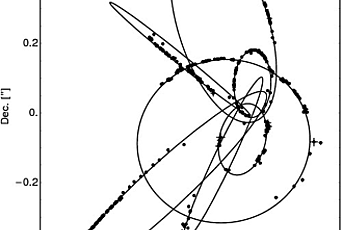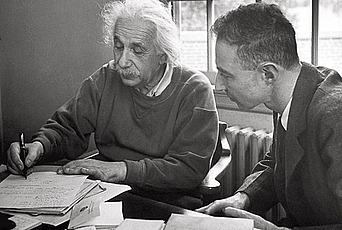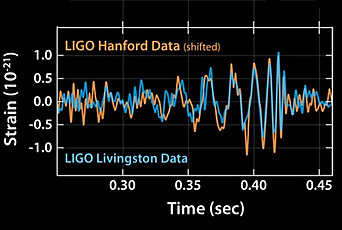In the public lecture “Gone with the Wind: Black Holes and their Gusty Influence on the Birth of Galaxies,” sponsored by the Association of Members of the Institute for Advanced Study (AMIAS), Nadia Zakamska, former John N. Bahcall Fellow and Member (2005–10) in the School of Natural Sciences, gives a comprehensive description of galaxy formation and shares insight into the complex interrelationship between supermassive black holes and their host galaxies. An article about her lecture appears below.
Galaxies are the visible building blocks of the universe, astrophysical laboratories that have profoundly informed our knowledge of cosmology and nature. Black holes—once a bizarre mathematical consequence of Einstein’s relativity theory—are now mainstream astronomy, thanks to studies of the centers of nearby galaxies where these exotic objects are routinely found. In May, Nadia Zakamska, former John N. Bahcall Fellow and Member (2005–10) in the School of Natural Sciences and Assistant Professor at Johns Hopkins University, described the basic theory of galaxy formation and shared insight into the complex interrelationship between supermassive black holes and their host galaxies.
According to basic galaxy formation theory, the universe consists of galaxies composed of billions to trillions of stars that form around a filamentary network of mysterious yet powerful dark matter that dominates gravity. It appears that almost every massive galaxy has a supermassive black hole in its center, which can be detected by its gravitational pull on surrounding stars in our own galaxy and by a characteristic stellar velocity pattern toward the center of other galaxies. The first galaxies formed from small quantum fluctuations that grew into gas that cooled and condensed into stars due to gravitational attraction; the first stellar black holes, which increase their size by consuming nearby stars and gas, were produced from explosions of massive stars (supernovae).
Aside from wanting to determine the composition of dark matter, cosmologists are also trying to understand why the current theory predicts the wrong number of galaxies. A possible explanation, which cosmologists are trying to match with observation, is that supermassive black hole winds, created when too much matter falls into the black hole, clear off the gas from its host galaxy and halt star formation. “This is a self-regulation process,” said Zakamska. “If the galaxy tries to feed too much mass into the black hole, the black hole produces a powerful wind, shuts off the star formation, and stops its own feeding.”—Kelly Devine Thomas, Editorial Director


